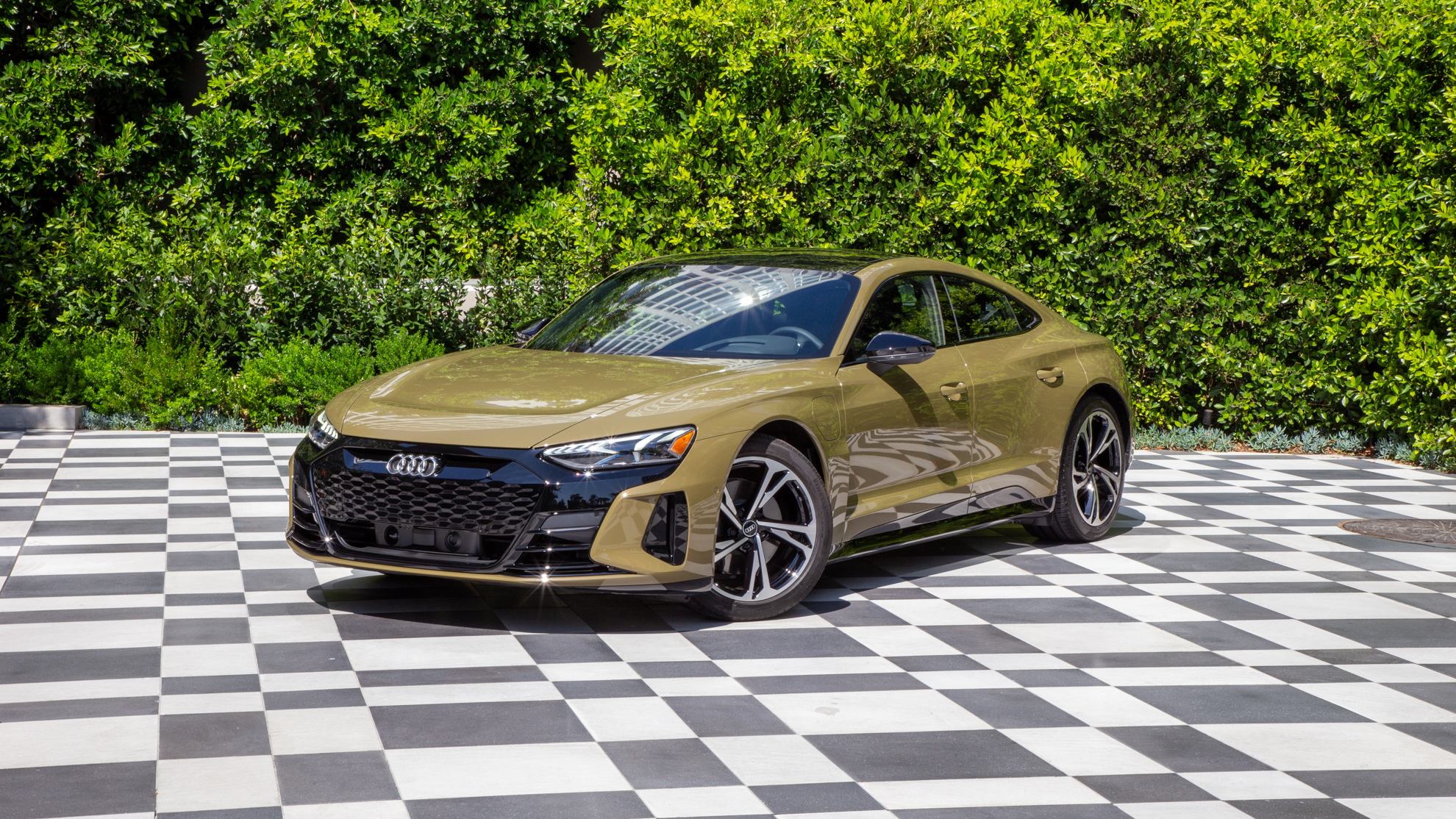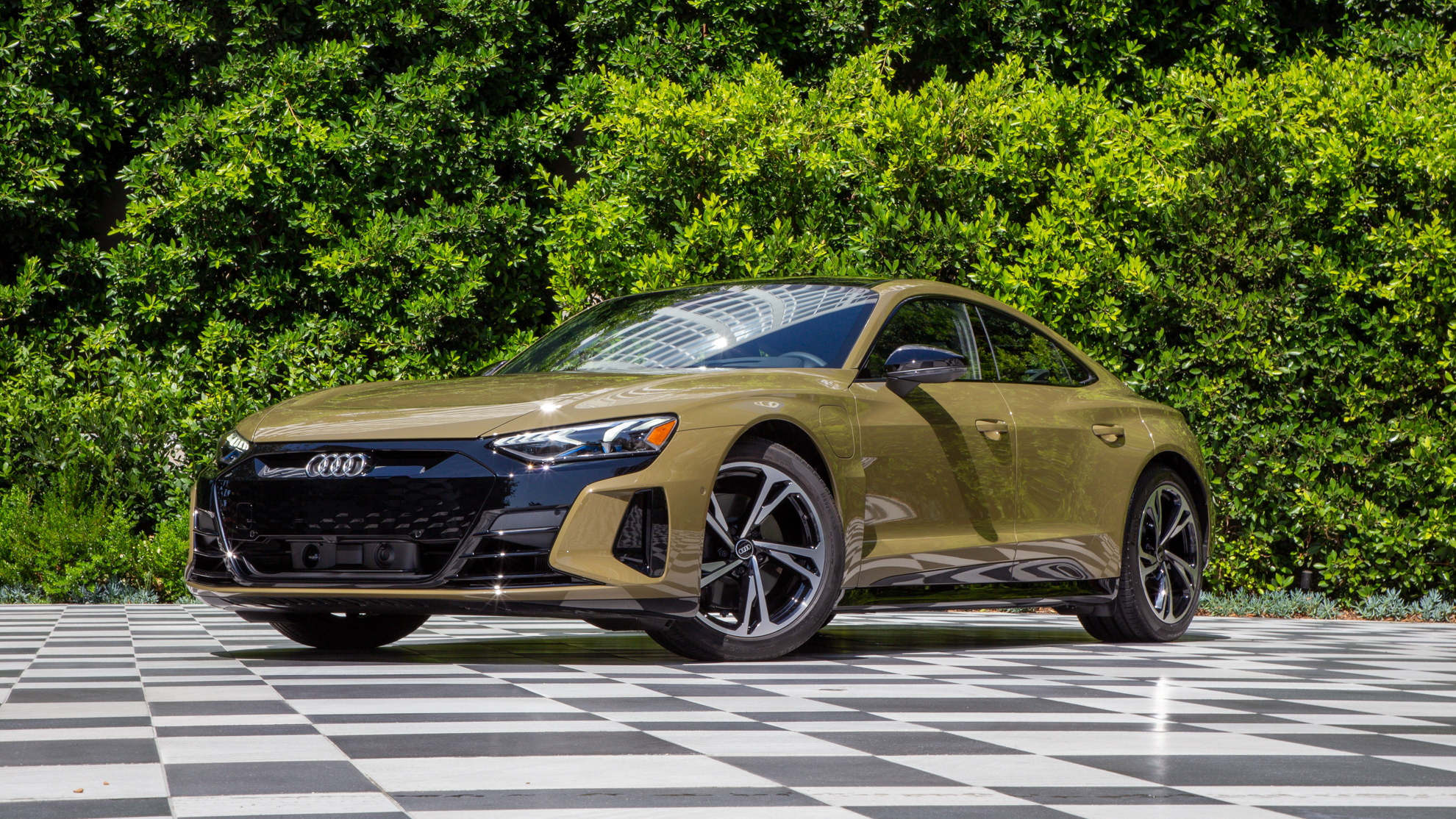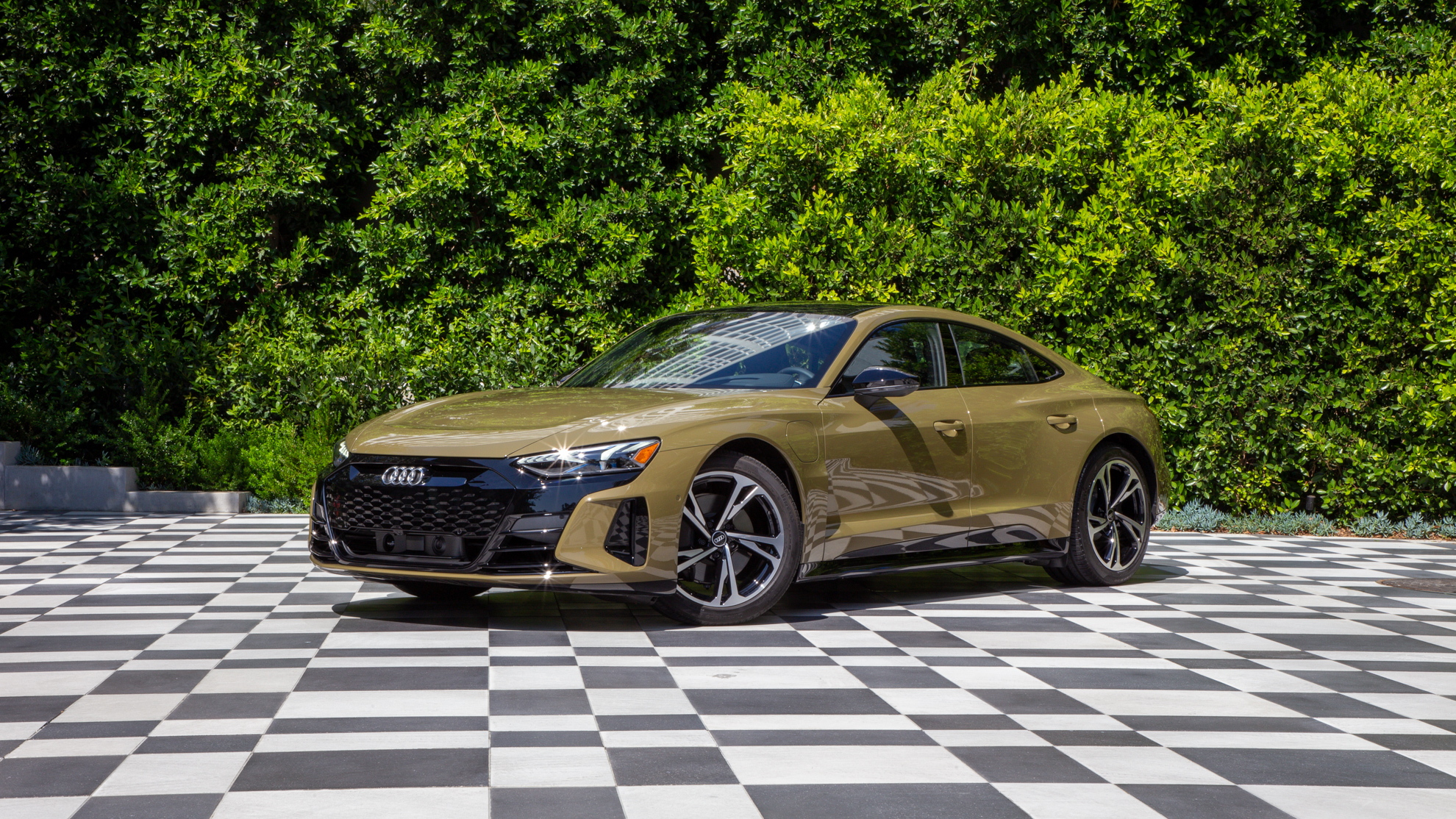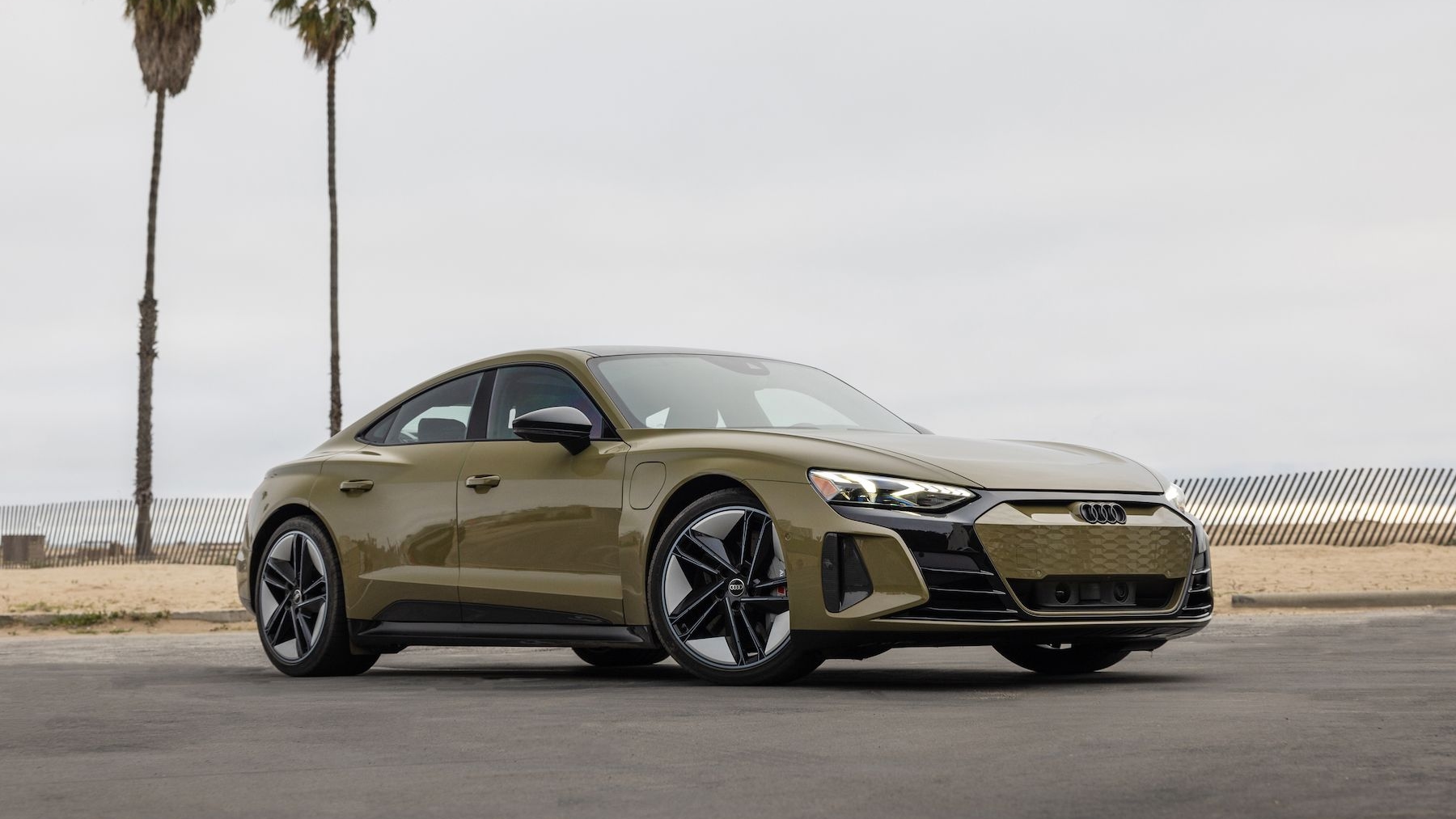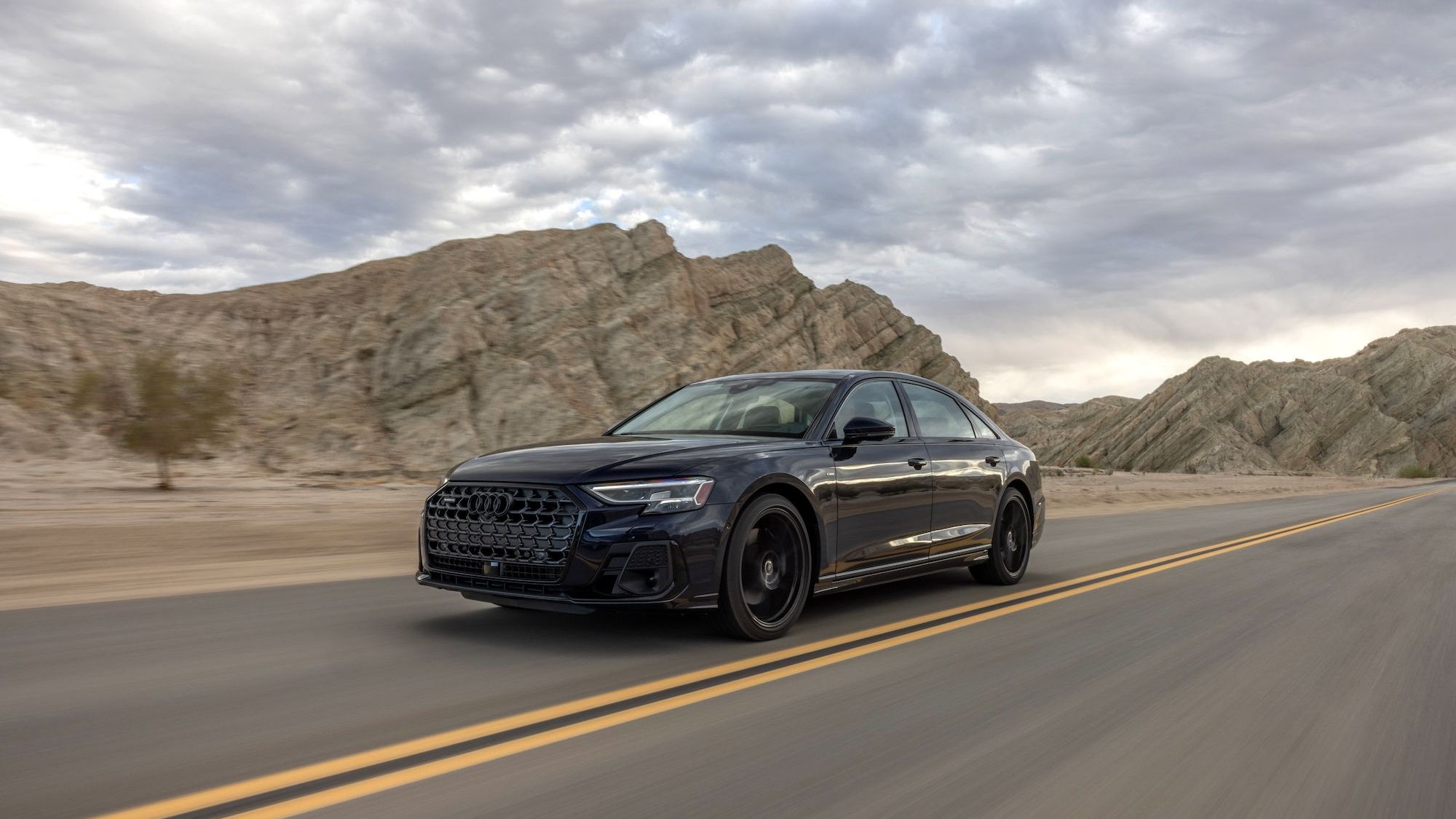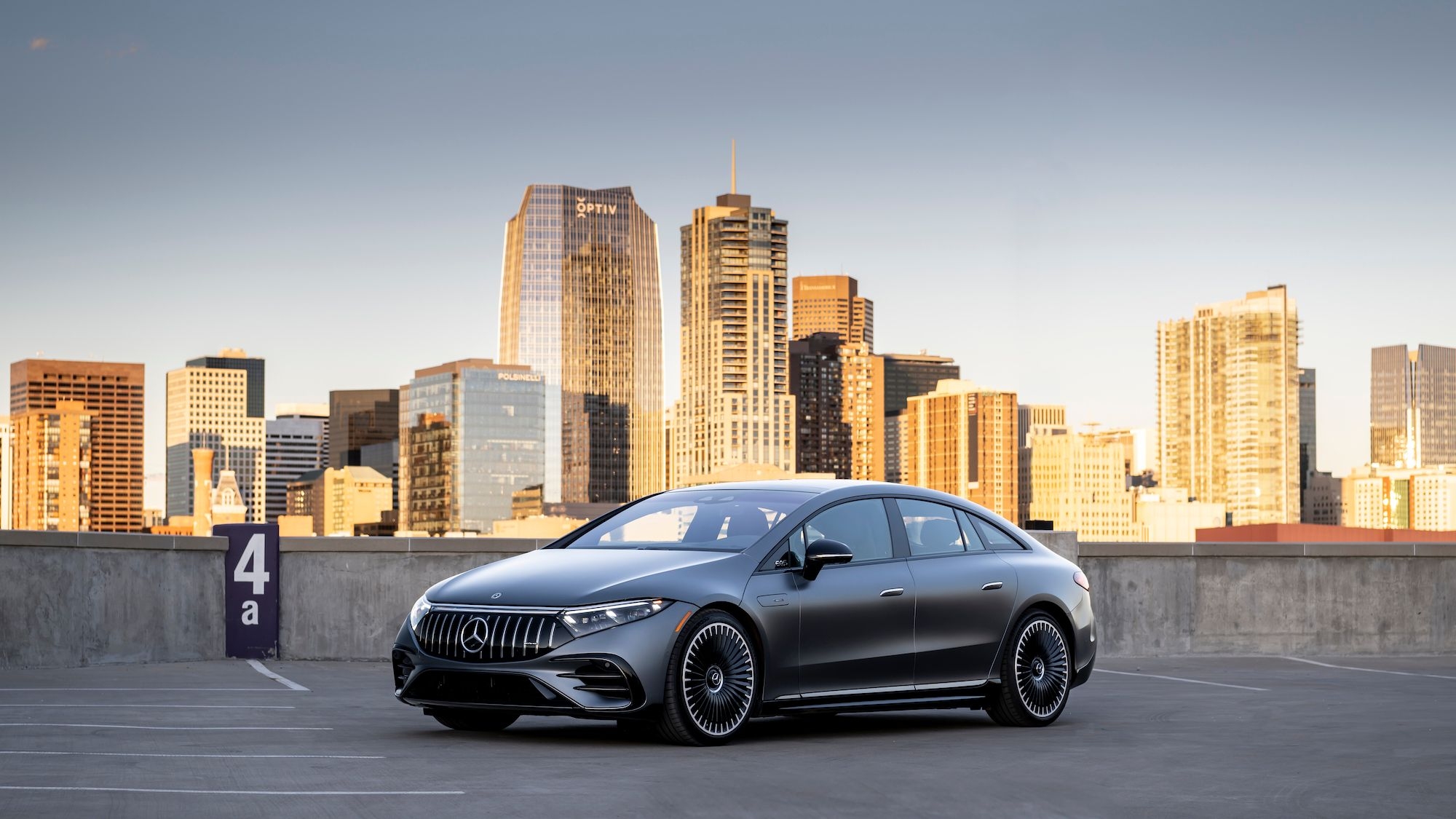Audi’s first forays into battery electric vehicles were SUVs, and while they didn’t look bad, they weren’t styled to be the slinky machines that the 2022 Audi E-Tron GT and the RS E-Tron GT are. This pair doesn’t turn heads so much as snap them clean off.
The aesthetics aren’t the only draw. These vehicles share solid bones, the dedicated electric vehicle J1 platform from the Porsche Taycan. That’s a perk of sharing one corporate overlord. The E-Tron GT shares some key similarities with the Taycan: both vehicles feature a rear electric motor with a 2-speed gearbox, the battery size is the same, and each offers 800-volt charging that can fill the battery from 5% to 80% in just 22 minutes.
The steering, suspension, and throttle tuning were all done in-house by Audi. Those differences popped up over my day with both the E-Tron GT and RS E-Tron GT around Los Angeles.
The drive started with the E-Tron GT in Hollywood, then took me over the Angeles Crest Highway to an airstrip north of the city. After conducting acceleration and slalom tests in the RS, it was back to the city over the same route to see how the more powerful variant handled the same mountain roads.

2022 Audi E-Tron GT
Straight shooters
Both the E-Tron GT and the RS use a dual-motor system with all-wheel drive standard and the same 93.4-kwh battery pack. Despite this similarity in components, the RS is much more powerful thanks to different software, according to Audi.
The E-Tron GT tops out at 496 hp and 464 lb-ft of torque, which can temporarily be boosted up to 522 hp and 472 lb-ft. In the RS, those figures jump up to 590 hp and 612 lb-ft of torque, and the horsepower can temporarily be boosted to 637. Range figures are very close: an estimated 238 miles for the E-Tron GT and 232 miles for the RS.
Even though it’s down on power, the E-Tron GT is no slouch. It still sprints from 0-60 mph in just 3.9 seconds. On canyon roads and regular highways, the E-Tron GT felt more than quick enough and poured on speed rapidly. It had plenty of passing power, but the car starts to run out of steam (electrons?) at around 70 mph.
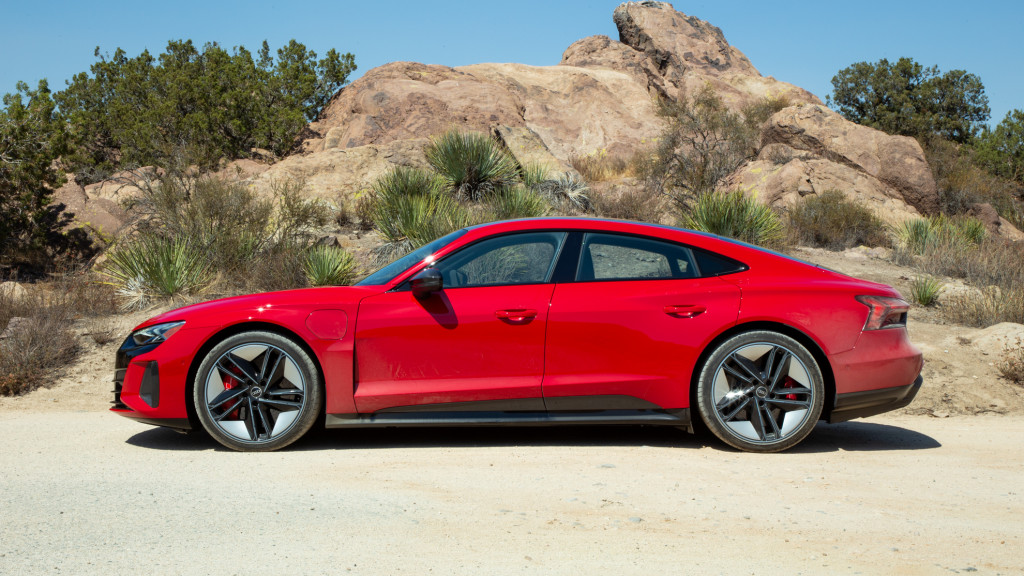
2022 Audi RS E-Tron GT

2022 Audi RS E-Tron GT
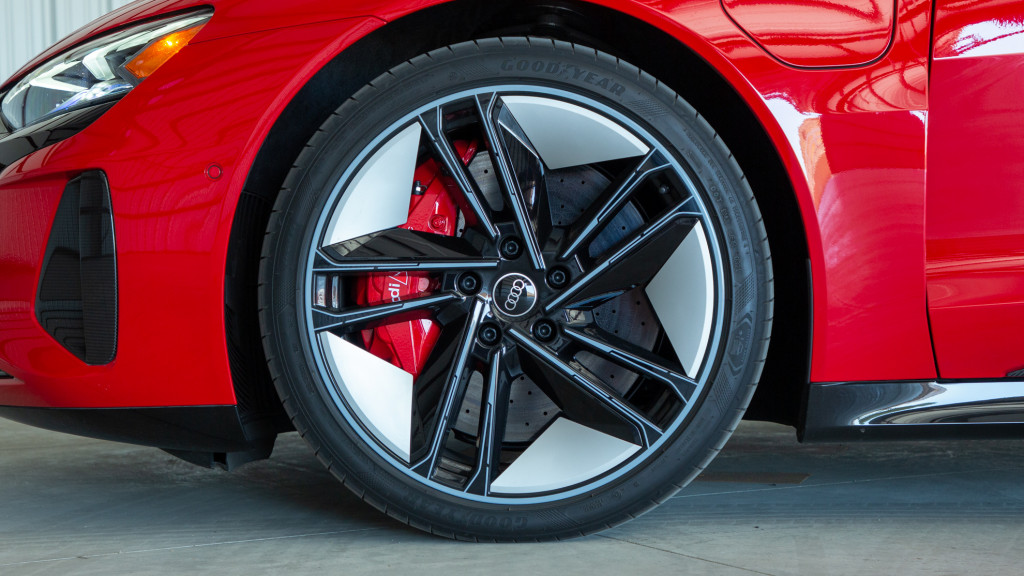
2022 Audi RS E-Tron GT
There are no such qualifiers for the RS E-Tron GT, which has noticeably stronger acceleration at all times. The RS pushes your head back into the headrest with gusto from a stop and powers through the 60-80 mph range with a lot more confidence.
Audi rented an airstrip to conduct RS E-Tron GT acceleration and slalom runs in a safe environment, and this is where the car was the most fun by a large margin.
The RS’s estimated 3.1-second 0-60 mph time is conservative. I performed several instrumented runs from 0-100 mph down the runway and logged a 0-60 mph time of just 2.99 seconds with launch control.
The outside temperature was near 100 degrees and I had just run the same car through a slalom course three times with the air conditioning and seat coolers cranked to maximum. Those are far from ideal conditions for an electric vehicle, and it still easily beat the 3.1 second estimate.
Launch control is extremely easy to activate: put the RS in Dynamic mode, load up the brake pedal, then push the accelerator to the floor. There’s a small blip on the digital speedometer to let you know launch control is activated, and then you drop the brake and the RS rips forward. The car came alive during these hard launches, but a pair of drives on tight canyon roads showed handling isn’t its forte.
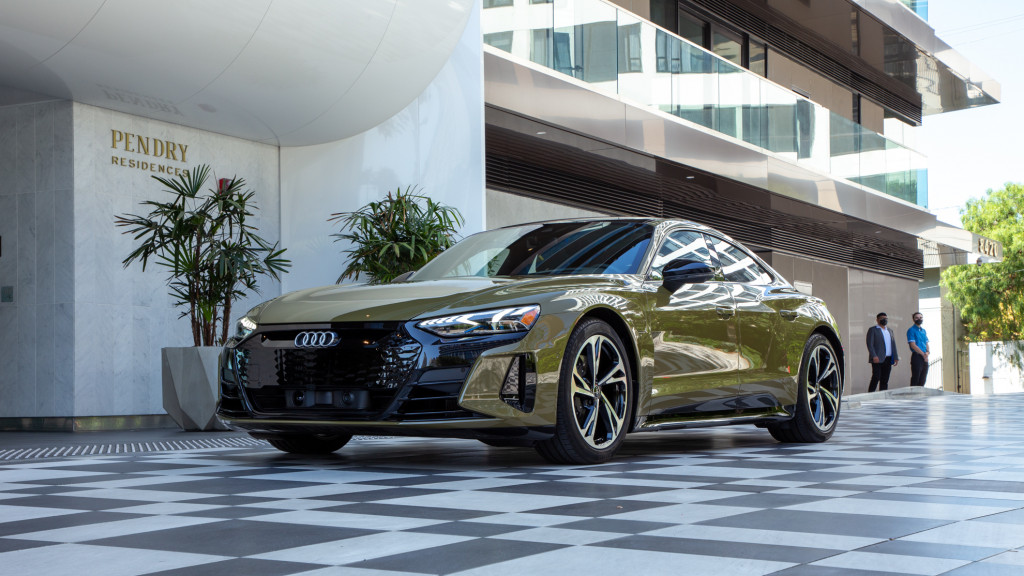
2022 Audi E-Tron GT

2022 Audi E-Tron GT
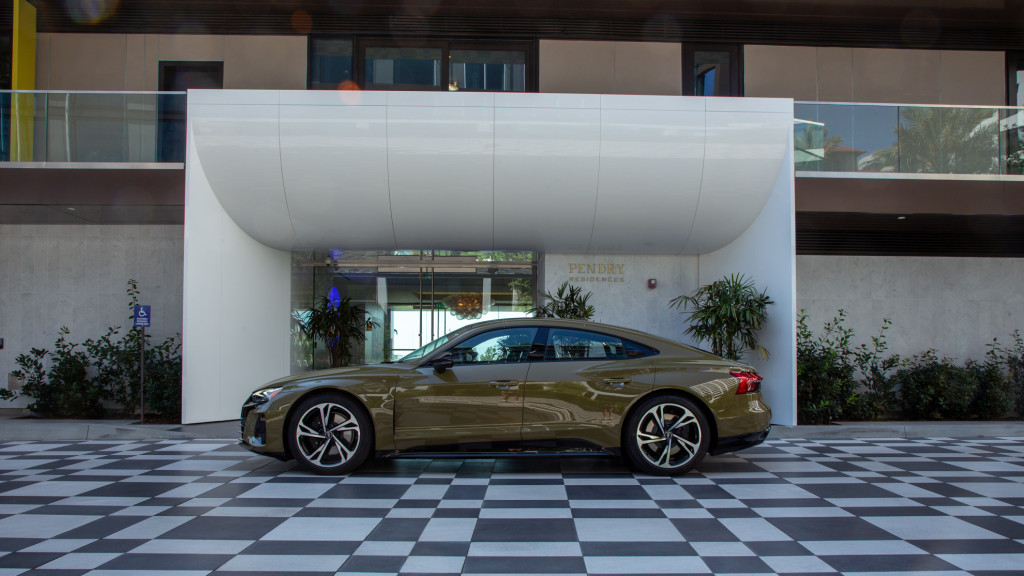
2022 Audi E-Tron GT
Going on tour
The “GT” in E-Tron GT hints at the car’s true purpose, and it is most comfortable cruising on the highway or in longer, winding turns that let its pliable suspension and easy power perform the best. On the freeway, the E-Tron GT and the RS both glide along in an effortless, eerie quiet like other electric vehicles. Tire noise becomes noticeable over rougher stretches of pavement, but on good roads the cabin is serene.
The suspensions underlying the E-Tron GT and RS E-Tron GT are exactly the same. Both come with a standard three-chamber adaptive air suspension that offers adjustable firmness. The E-Tron GT model I tested also came with the Performance package ($6,000) with its rear torque vectoring system, power steering plus (boosts the steering at low speeds to reduce effort), and rear-axle steering, which are all standard on the RS except for rear-wheel steering.
The suspension did a good job of controlling the E-Tron GT’s weight on curvy roads. I switched to Dynamic to firm up the suspension (in both vehicles), and even then the ride never felt choppy.
A lack of steering feel is what really holds the E-Tron GT back, in both variants. While I can say the same about other Audis, here it made me feel further detached from a car that already feels artificial with so many levels of electronic controls. That detachment removes a lot of the fun from the experience. It felt like watching a robot shoot baskets. It’s cool, but where’s the joy?
On a mountain road with the E-Tron GT’s 5,000 pounds underneath me, I want all of the information that I can get to keep that girth under control, and the steering just doesn’t do that. The soft ride becomes floaty at times. This is where the E-Tron GT breaks from the Taycan, which also has light steering initially but builds resistance off-center for greater stability. I couldn’t find the same level of confidence in the Audi.
It’s especially disappointing in the RS E-Tron GT, which doesn’t offer adjustable steering. In Audi’s other RS performance vehicles, the driver can turn up the steering weight. It’s a strange omission for the RS E-Tron GT, which wears the badge and would benefit greatly from the added weight, though it could use more feedback, too.

2022 Audi RS E-Tron GT
Sci-fi soundtrack
Audi offers an “E-Tron sport sound” for the RS model. Two speakers inside and two outside the vehicle project a sound that was internally developed by Audi and features 32 individual sound layers, my favorite of which is a didgeridoo being blown through a fan. It sounds like a whooshing spaceship. The sound changes with the drive mode, and it’s most noticeable (inside and out) in Dynamic mode. On the airstrip, I had to curb the desire to say “engage,” a la Captain Picard, before each run.
I’m not sold on the noise, but it isn’t offensive like the Toyota Mirai’s Sport mode, which seems to be engineered to annoy. It fits the futuristic vibe of the vehicle and kids are going to think it’s super cool.
The sound can be turned off by using the RS’s Individual drive mode, and I’d recommend setting the suspension and power to their more aggressive postures while ditching the noise.
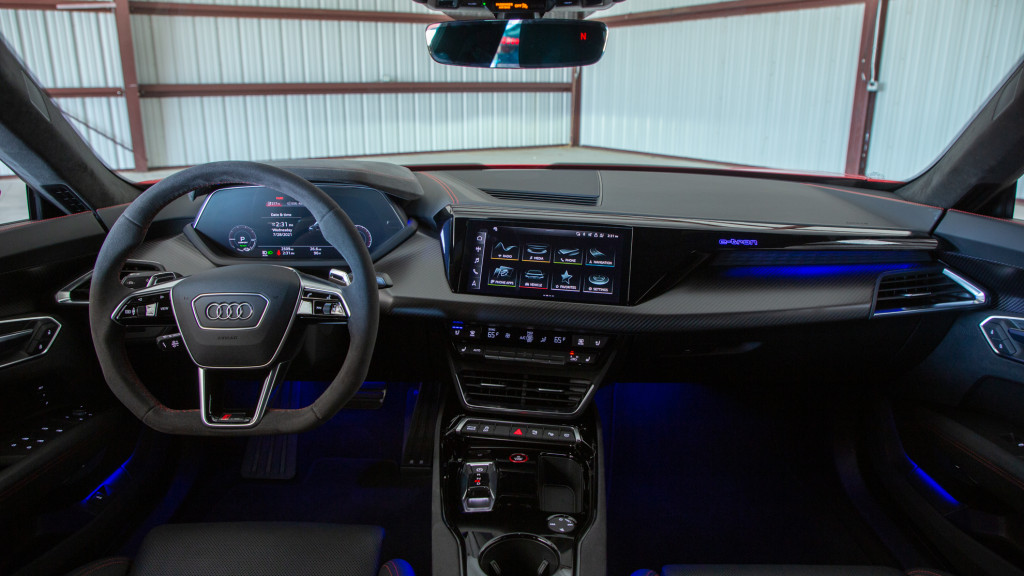
2022 Audi RS E-Tron GT

2022 Audi RS E-Tron GT
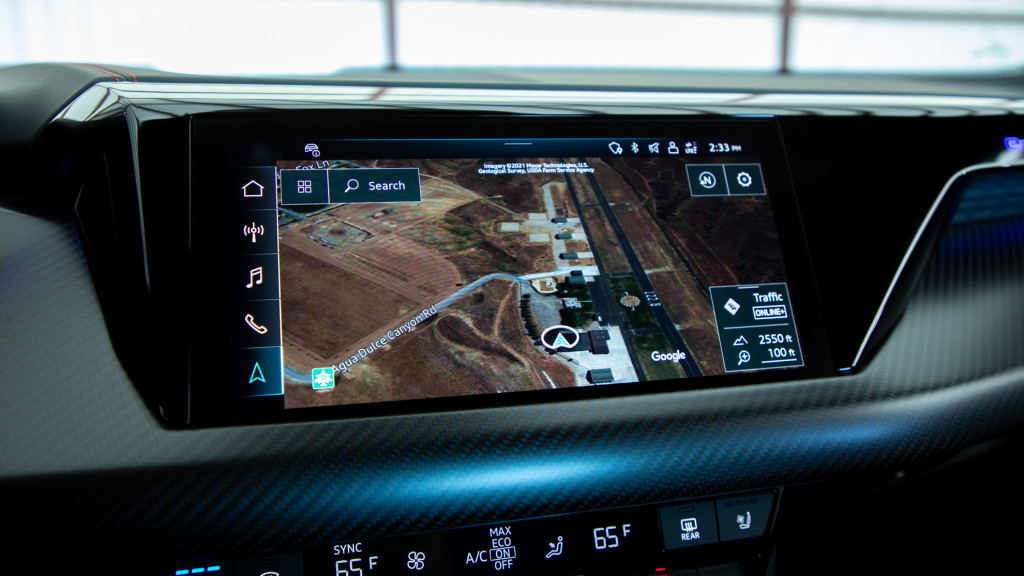
2022 Audi RS E-Tron GT
Buttons are back
In a change I support wholeheartedly, especially for a car with such futuristic style, the Audi E-Tron GT goes a bit old school inside. It ditches Audi’s two screen setup in the center stack, opting for a single multimedia screen with traditional climate and seat heating/cooling controls below it. Audi said it chose this direction to allow drivers to direct more attention to the instrument panel and keep their eyes more focused on the road. Shouldn’t this advice apply to all Audis?
Much like the Taycan, the E-Tron GT’s rear seats are somewhat cramped. Even though the E-Tron GT is only 2.0 inches shorter than the RS 7 overall, it feels like more than that has been taken out of the back seat, which is disappointing for the size. I also had less than an inch between my head and the headliner, so anyone taller than 6-feet may run into an issue vertically as well.
A large panoramic glass roof at least provides some visual space that helps it to feel less confined, but the RS model, with its fixed carbon-fiber roof (that can’t be swapped out), feels more constrained both visually and dimensionally.

2022 Audi RS E-Tron GT
Performance and price gap
The Audi E-Tron RS is easily the more exciting of the two vehicles, but the massive price gap between the two is hard to justify even with the RS’s performance gains. The E-Tron GT starts at $100,945 (including destination charges) and the RS E-Tron GT runs $140,945. Audi still has federal tax credits to use, so many buyers can effectively knock $7,500 off the price of either.
The E-Tron GT I tested was a Prestige model (starting at $108,145) with the added Performance package, Full Leather Interior package ($4,000), and a great Tactical Green paint job ($595), all of which gave it a sticker of $118,740. The E-Tron RS was a Year One edition, which tacks on another $20,350 to the base price and pushed the final price of my tester to $161,890. Audi says there won’t be a cap on the number of Year One models, and for the first year of production, that will be the only way to get carbon-ceramic brakes.
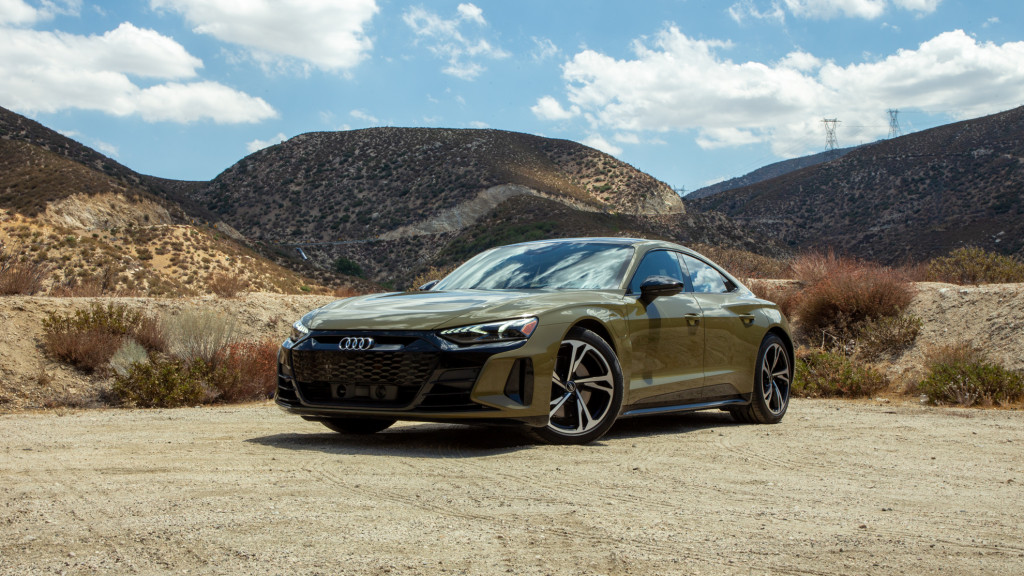
2022 Audi E-Tron GT
While the RS E-Tron GT would be my preferred choice, you can get about 90% of the performance by applying the Performance package to the E-Tron GT given the suspension similarities. Besides, you’ll seldom be able to stretch out the RS to tap into its extra power.
Both vehicles fulfill their “GT” mission, though the steering needs to be tightened up to better match the solid chassis and suspension. The 2022 Audi E-Tron GT and RS E-Tron GT are powerful and comfortable cars with fantastic front seats that left me as relaxed when stepping out as I was when stepping in. They’re softer alternatives to the Porsche Taycan, but they have a slinky look unique to Audi.
The E-Tron GT and RS E-Tron GT are both on sale now.
Audi provided a night at a hotel, an airstrip, and two vehicles for Motor Authority to bring you this firsthand drive report.
